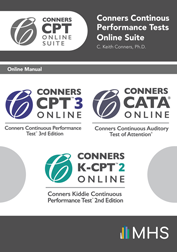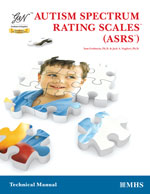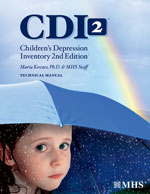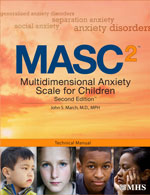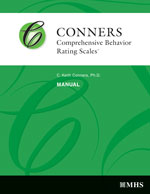Conners 4®
Conners 4th Edition™: Leading ADHD Assessment for Youth
Filters
The Conners 4th Edition™ (Conners 4®) builds on the long history and strengths of the multi-informant Conners Rating Scales and provides a thorough assessment of symptoms and impairments associated with ADHD, as well as common co-occurring problems and disorders in youth aged 6 to 18 years.
The Conners 4 gathers information from multiple sources, including one or more parents/guardians (using the Conners 4 Parent form), one or more teachers (using the Conners 4 Teacher form), and the youth themselves (using the Conners 4 Self-Report). Wherever possible, the scales across all rater forms are aligned to facilitate the comparison of information across informants.
Age
- Parent and Teacher: 6–18 years
- Self-Report: 8–18 years
Administration Type
- Parent
- Teacher
- Self-Report
Administration Time
- 1 to 25 minutes
Number of Items
- Conners 4 Parent: Full Length, 117; Short, 53
- Conners 4 Teacher: Full Length, 109; Short, 49
- Conners 4 Self-Report: Full Length, 118; Short, 51
- Conners 4 ADHD Index Parent, Teacher, and Self-Report: 12
Translations
- English (US)
- Spanish (US)
- French (CDN)
Qualification Level
- B
Format(s)
- Administer and score online
- Print paper forms and score online
Reading Level
- Parent: 5th grade
- Teacher: 5th grade
- Self-Report: 3rd grade
- Efficiency and Usability
Save time and improve efficiency with customizable reports, a free digital manual, online scoring and reporting, easy inventory management, and printable forms.
- Superior Quantification of Severity
Evaluate the severity of symptoms and level of impairment due to symptoms by comparing the youth's results to an ADHD Reference Sample (youth diagnosed with ADHD).
- Enhanced Collaboration Among Stakeholders
Facilitate collaboration with parents using the enhanced Parent Feedback Handout (easy-to-understand explanation and summary of results).
- Designed for Fairness and Inclusivity
Built to maximize fairness and inclusivity, through the use of gender-inclusive language, culturally sensitive items, and items and scales that show no evidence of measurement bias with regard to gender, race/ethnicity, country of residence, or parental education level.
- Accuracy of Assessment
Provides a comprehensive picture of how a rater approached completing the Conners 4 using the Response Style Analysis that includes validity scales, the number of omitted items, and the average number of items completed per minute (pace).
- Address critical concerns with Severe Conduct and Self-Harm Critical Items. This sensitive content can be excluded from the test by disabling either or both critical item sets from the MHS Online Assessment Center+ (MAC+).
- Flag for concerns about sleep through a Sleep Problems Indicator and further examine using PROMIS (Sleep Related Disturbance Form 8a & Sleep Related Impairment Short Form 8a), sleep measures provided for free for Conners 4 users through MAC+.
- Measure impairments related to ADHD symptoms in the school, social, and family domains.
- Evaluate content areas and common co-occurring problems such as Emotional Dysregulation, Depressed Mood, and Anxious Thoughts.
- Apply a dimensional approach to ADHD assessment with an additional DSM Symptoms Scale–Total ADHD Symptoms.
- Informed Intervention
Evaluate a youth's relative strengths and weaknesses using Within-Profile Comparisons.
- Easier Administration
- Take the guesswork out of your inventory management with a new way to order Conners 4 uses.
- Purchase a general Conners 4 use and apply it across any Conners 4 form while generating reports.
Conners 4:
This form is the most comprehensive and is recommended for use in initial evaluations and full re-evaluations. This form includes all Conners 4 items and scales.
Conners 4–Short:
This form is useful when a rater has limited time, or when the rater will be asked to complete the Conners 4 repeatedly (e.g., monthly assessment of treatment response). This form takes less time to complete than the full-length form but is not as comprehensive because it has fewer scales and fewer items per scale (for both Content and Impairment & Functional Outcome scales).
Conners 4–ADHD Index:
This index can be used as a screener to determine which youth are most likely to require a more comprehensive evaluation. The Conners 4–ADHD Index contains 12 items from the full-length form that best differentiate youth diagnosed with ADHD from youth in the general population.
Single Rater Report:
Provides detailed information about scores from a single administration, presented numerically, graphically, and within an interpretive summary. A youth’s scores are compared to those in one or more Normative Samples, and optionally, to an ADHD Reference Sample. Also includes a Within-Profile Comparison of the youth’s results to their own average score. Elevations at both the scale and item level are included. Key results are provided in a one-page overview.
Multi-Rater Report:
Combines the results of up to five raters to provide an overview of the youth’s behavior from a multi-rater perspective and highlights potentially important inter-rater differences in scores. It is available for the full-length Conners 4, Conners 4–Short, and the Conners 4–ADHD Index.
Reliability:
The Conners 4 Parent, Teacher, and Self-Report scale have excellent internal consistency (median omega coefficient = .94), strong test-retest reliability (median r = .89), and moderate to strong inter-rater reliability (median r = .84 for two parent raters; median r = .52 for two teacher raters).
Validity:
- Results from confirmatory factor analyses (CFA) provided evidence to support the structure of the Conners 4 scales (6-factor model for the Content Scales [CFI ≥ .940, RMSEA ≤ .051]) and 3-factor model for Parent and Self-Report and 2-factor model for Teacher for the Impairment & Functional Outcome Scales [CFI ≥ .935; RMSEA ≤ .094]).
- Evidence to support the convergent validity of the Conners 4 was found, given the moderate to very strong correlations between the Conners 4 and established assessments measuring related constructs (median |r| across four convergent validity studies = .73.
- The Conners 4 also demonstrated a high degree of criterion-related validity, as various clinical groups had distinctly different profiles of scores. Ratings of youth with ADHD yielded higher scores than ratings of both youth from the General Population (median Cohen's d for significant differences: Parent = 1.51, Teacher = 0.87, Self-Report = 0.77) and youth with Depression or Anxiety (median Cohen's d for significant differences: Parent = 0.88, Teacher = 0.49, Self-Report = 0.57). Furthermore, endorsement of Self-Harm Critical Items and the Sleep Problems Indicator Items from ADHD groups was higher than the General Population groups. Additionally, unique symptom profiles of Conners 4 scores were observed for ADHD Inattentive, ADHD Hyperactive/Impulsive, and ADHD Combined presentation groups (e.g., scores on scales related to hyperactivity and impulsivity tended to be higher in the ADHD Hyperactive/Impulsive and ADHD Combined groups than the ADHD Inattentive group).
Fairness:
There is strong evidence that the Conners 4 meets or exceeds the fairness requirements outlined in the Standards for Educational and Psychological Testing (AERA, APA, & NCME, 2014). When investigating differences by gender, race/ethnicity, country of residence, and parental education levels, there was (a) no evidence of meaningful measurement invariance in the factor models, (b) no evidence of meaningful differential test functioning between groups, and (c) negligible to small differences in average test scores between groups (median |d| = .07).
Updated normative data was derived from a large sample designed to be representative of the North American population (based on the U.S. and Canadian census figures), stratified based on age, gender, race/ethnicity, parental education level, and geographic region. A total of 3,120 youth were included in the Normative Samples (N = 1,560 for Parent; N = 1,560 for Teacher; and N = 1,100 for Self-Report). Combined gender norms are provided for youth in 1-year age intervals; separate norms for males and females are also available. ADHD Reference Samples are also available (N = 560 for Parent, N = 321 for Teacher, and N = 229 for Self-Report).
Conners 4 Introduction and Application
On-Demand Training
MHS provides an optional Conners 4 On-Demand Training with 1.25 CE/CPD credits available. Join Product and Solutions Manager Mathangi Selvamenan, Ph.D., and Assessment Consultant Janelle C. Bierdeman, Ed.S. NCSP, for an introduction to the brand new Conners 4th Edition. Mathangi will review a background of ADHD assessment, and an overview of the Conners 4’s modified and expanded feature set, including updated standardization, reliability, validity and fairness considerations. Janelle will then move on to administration, scoring and interpretation guidelines, concluding with an example case study.
This is an 80 minute intermediate level training (fundamental knowledge of ADHD and Conners assessment is recommended).
By the end of this training video, you will be able to:
- Describe the best practices for a thorough assessment of ADHD
- Discuss the key features of the Conners 4, including its modified structure and content
- Outline the development considerations and psychometric properties of the Conners 4
- Identify the user requirements for the administration and scoring of the test
- Interpret Conners 4 results to guide decision making and intervention planning
-
Email Addresscustomerservice@mhs.com
-
Call Toll-FreeCDN1.800.268.6011US1.800.456.3003
-
International Phone+1.416.492.2627
Are you new to using MHS tools online, and want to purchase the Conners 4?
- Purchase Conners 4 Uses from the ‘Products’ section on this page.
- Checkout using the email address you want associated with your new MHS Assessment Center+ (MAC+) account.
- Once your purchase is complete, we’ll create your MAC+ account and deposit your online Conners 4 uses. Please note, this process takes between 1-2 business days to complete.
- When your account is created you will receive a welcome email from noreply@MHS.com. Please double check your spam folder if you haven't received this email.
All Conners 4 users receive access to a free, digital version of the Conners 4 Manual through their MHS Online Assessment Center+ (MAC+) account.
- A printed version of the Conners 4 Manual is also available for purchase below.
- During checkout, please select Ground Shippingas your shipping method. The other shipping methods listed are unavailable for this product and will result in an additional fee added to your order (with no change in estimated delivery time).
- Estimated delivery within North America is 2-3 weeks. International shipping times may vary.

